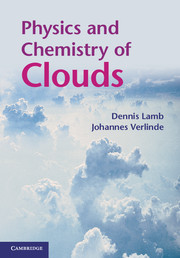Appendix B - Overview of thermodynamics
Published online by Cambridge University Press: 07 October 2011
Summary
Thermodynamics is the study of energy and its transformations. Traditionally, thermodynamics has been used to understand the transfer of “heat” and the mechanical work that can be realized from it. Mechanical heat engines became important to society during the Industrial Revolution, but natural heat engines exist, too, although we do not often speak of thunderstorms and hurricanes in such terms. All such “engines” ultimately derive their organized, macroscopic motions from the random motions of the molecules making up the systems.
Thermodynamics is useful because it applies to many phenomena in the Universe. At the same time, the discipline can become abstract, especially when one is not sure exactly what part of the Universe is being considered. It is therefore important to define the components and variables of the system carefully. Traditionally, the “system” is the part of the universe we are interested in for a particular application. Any system is separated from the rest of the Universe by a “control surface” situated between it and its “surroundings” or “environment”. The “system” plus “surroundings” together make up the “universe”. The “state” of the system at any given time is specified by the magnitudes of all relevant macro-scopic variables, such as temperature, pressure, and volume of the system. In atmospheric physics, a commonly used system is a parcel of air, an amount of gas that is small enough to have uniform properties, but large enough to contain many molecules.
- Type
- Chapter
- Information
- Physics and Chemistry of Clouds , pp. 550 - 556Publisher: Cambridge University PressPrint publication year: 2011



